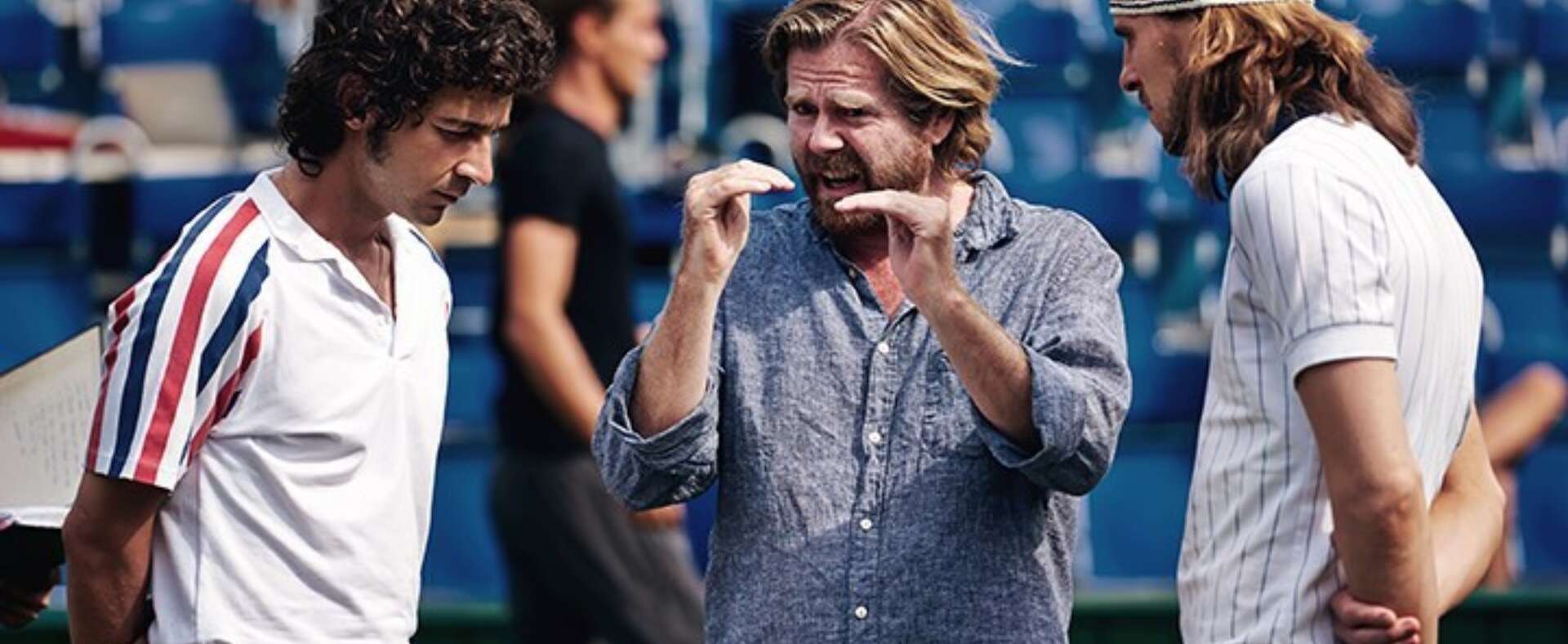WRITTEN BY: Annika Pham
The director of one of the most anticipated films of 2017 spoke to us, a few days before the film’s world premiere in Toronto.

The director of one of the most anticipated films of 2017 spoke to us, a few days before the film’s world premiere in Toronto.
How did you get involved in the film?
Janus Metz: The producers at SF Studios [Jon Nohrsted and Fredrik Wikström Nicastro] and scriptwriter [Ronnie Sandahl] approached me with the script. I was immediately gripped by the storyline for the film, which is more a psychological drama than a tennis movie. I’ve always been interested in existential dramas, how do we attain love, how do we create a sense of purpose in our lives, how do we make ourselves worthy etc. And all these themes were combined in the script.
How did you use your documentary experience for the film? Weren’t you tempted to include archive material and interviews with the central characters Borg and McEnroe?
JM: There is no archive material in the film, except the end credit where we have photos of the real tennis champions. The film is a reconstruction of reality, a dramatisation inspired by real events.
Unfortunately neither Björn nor John were involved in the filmmaking process. However, Björn’s son Leo plays him as a young boy, and that created an opportunity to speak to Björn. He was very respectful of the material we filmed and never exercised any pressure. We had a beautiful relationship.
Was it your idea to cast Björn’s son Leo?
JM: We were looking for a boy, with a talent for tennis. We were actually approached by Leo, who at the time didn’t know he would have to play his father as a teenager. He wrote us a letter to attend a casting session for a Swedish film. I was thrilled and at the same time a bit hesitant. I didn’t want to create an awkward situation. What if I wanted to do something that Björn didn’t appreciate and Leo would be caught in the middle? Thankfully we had honest discussions with the Borg family. Leo is passionate about tennis and really wanted to do the film, so his father said: ‘you should just treat him like any other actor’. Plus Leo was undeniably very good! When you see him and Björn at the same age, their resemblance is striking, and they carry themselves the same way.
How did Sverrir Gudnason and Shia La Boeuf prepare for their roles?
JM: It was a huge preparation. They had to turn into athletes, learn to play tennis in a way that we could use in the movie. So they did extensive boot camp, physical training six days a week for six months. It was extraordinary to see their gradual transformation. To make the tennis exchanges look real, we did use digital tricks, but the actors’ movements were real.
What personal memories do you have of the emblematic 1980 Wimbledon game? How old were you then? JM: I was only 6 so I don’t remember that specific match. But I do remember the aura that surrounded tennis at the time. There were great personalities, and audiences and the media had more access to the players who were not locked away like today. And of course, Borg & McEnroe were like rock stars, semi-gods.
Wimbledon was a big part of my childhood and something that my family would watch religiously. It was a big part of my childhood. I remember the sound of the tennis balls, on a lazy Saturday afternoon; I remember that everyone was waiting with excitement for McEnroe to throw a tantrum and the rivalry between him and Borg was extraordinary. And the 1980 Wimbledon final is still regarded as perhaps the best match ever in tennis history.
For mature audiences these memories are still vivid, but in what way does the film also appeal to younger audiences who do not know those two tennis icons?
JM: The film is first and foremost a psychological drama about ambition, the wish to be number one, the need to be appreciated and loved. It also deals with subconscious issues, about someone’s sense of purpose. It is also a true battle of personalities that keeps you on the edge of your seat. The tennis court is like a battlefield where two fierce opponents fight to win and to gain acceptance.
How did you feel about directing your first fiction film, a large-scale Scandinavian production with international stars and a lot at stake?
JM: I loved doing the movie that resonated with me personally. I went into this movie, with the firm intention of not being intimidated by the scale of the project and stars involved. Stellan Skarsgård told me: “as long as things look good around the camera, you and your DoP enjoy making the movie, and we actors enjoy it, then everything will be great!”
Because of Borg vs McEnroe, you’ve put aside your epic documentary project Between two Worlds, a study of globalization and its impact on human beings, seen through the sample of Thai/Danish marriages, shot over a decade. You must be looking forward to locking this project?
JM: Yes. I’m planning to finish the film by the beginning of 2018, to hopefully attend a big festival in the spring. I’m looking forward to working again with the people who have dedicated so much of their time and energy to make this film.